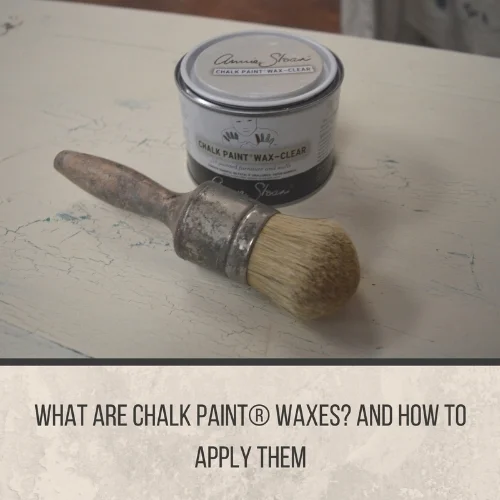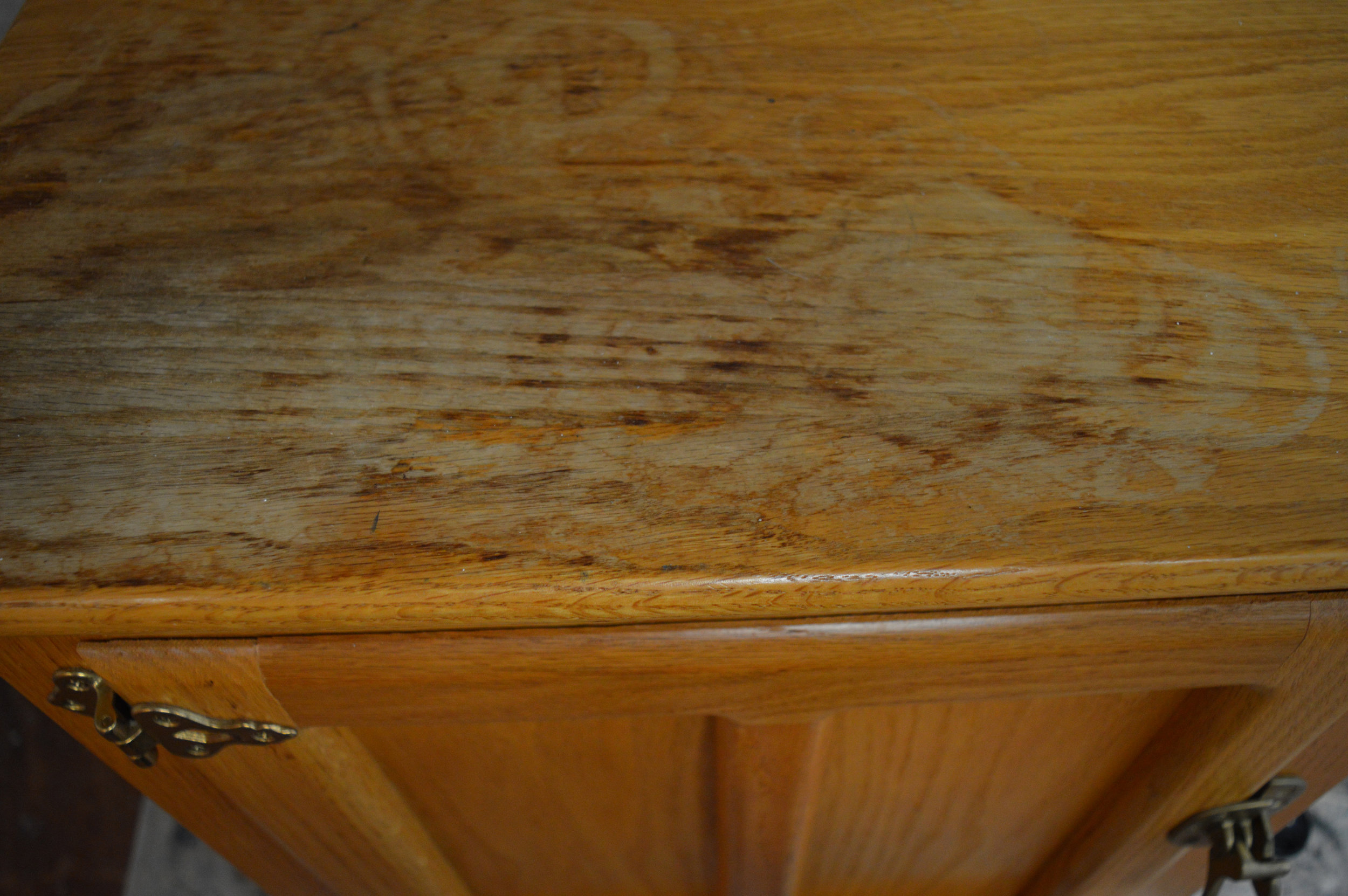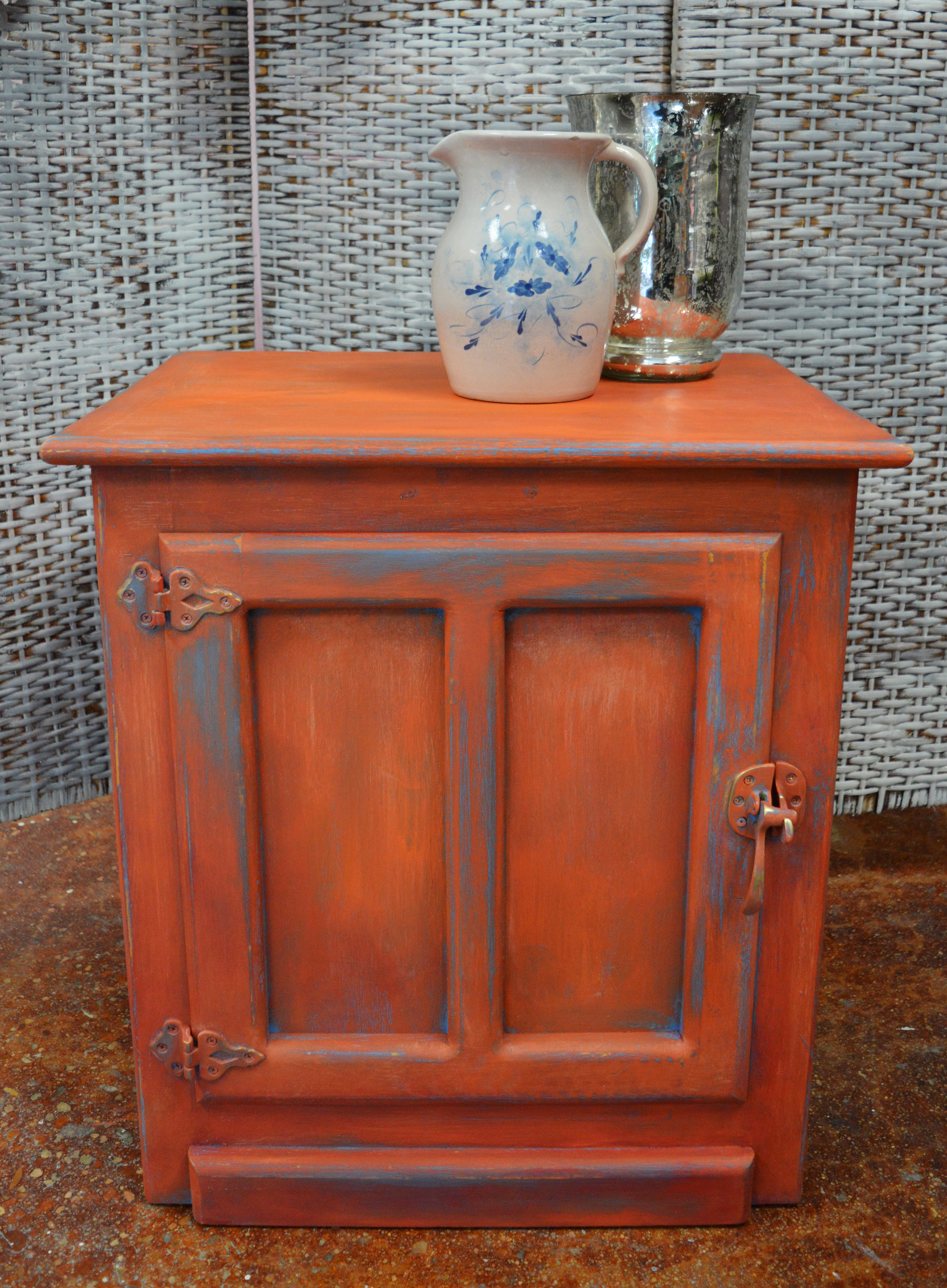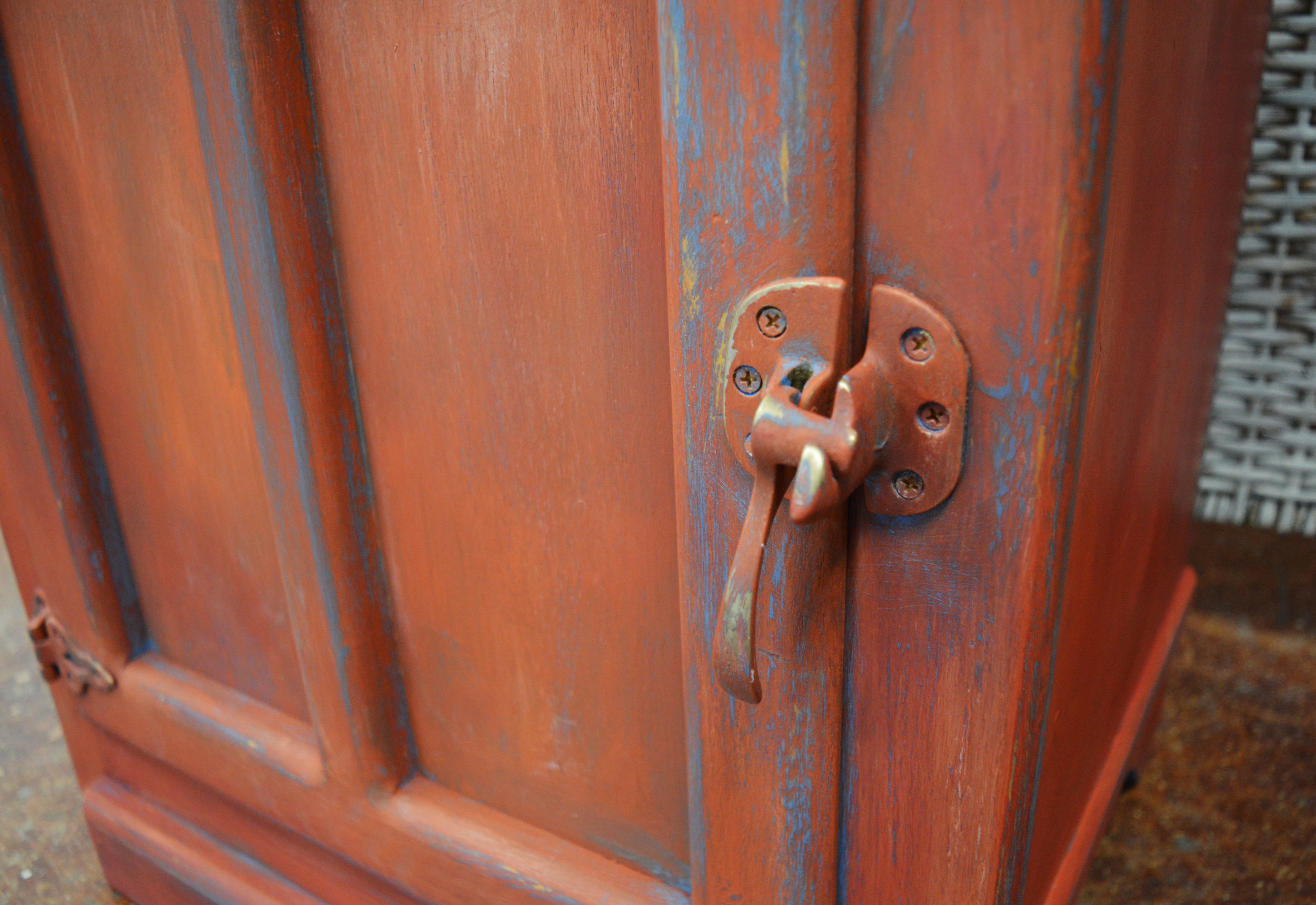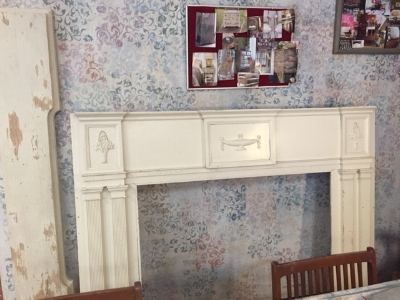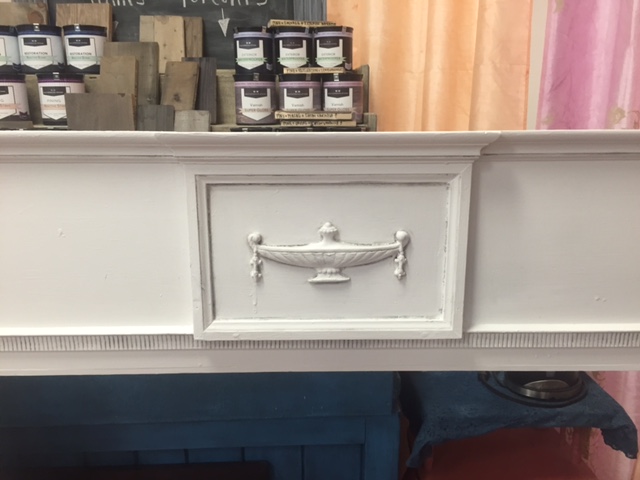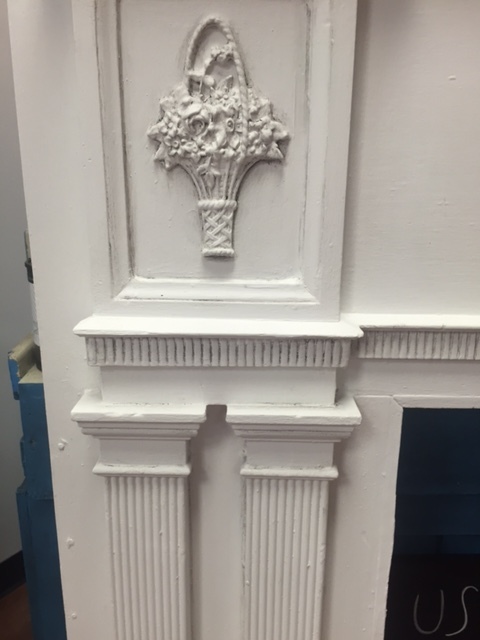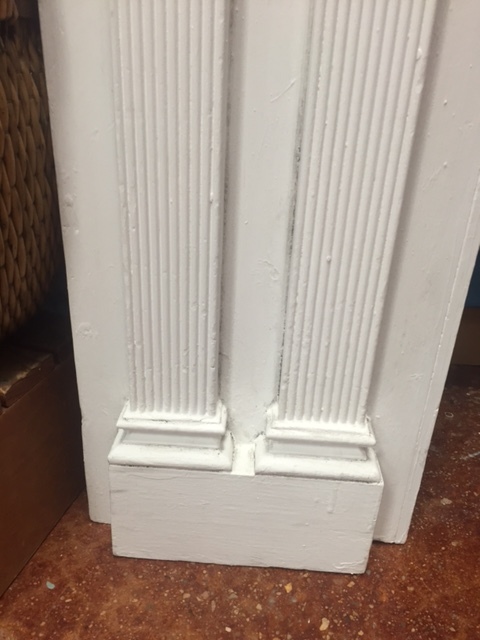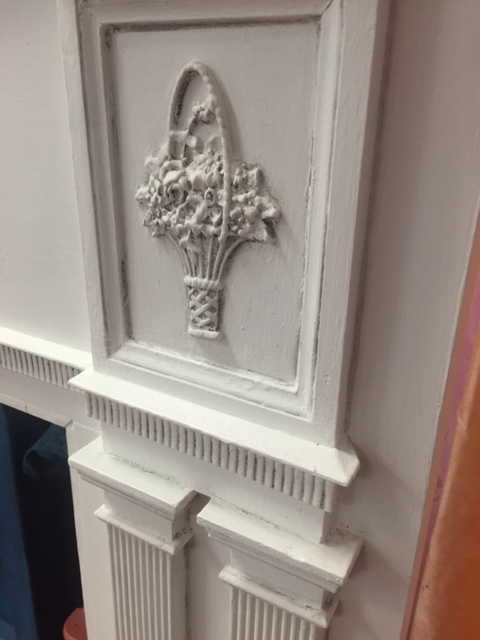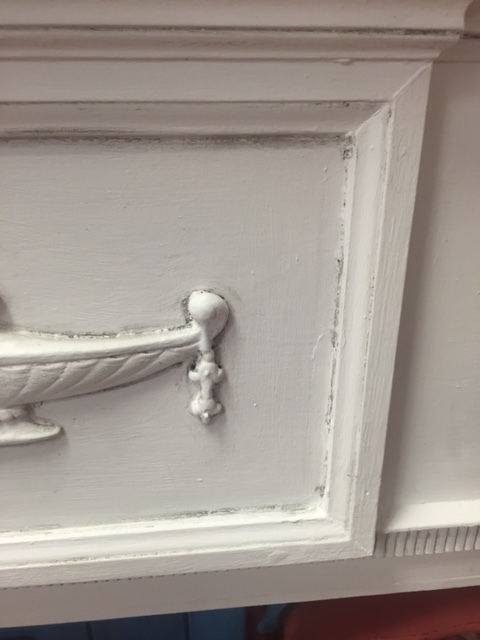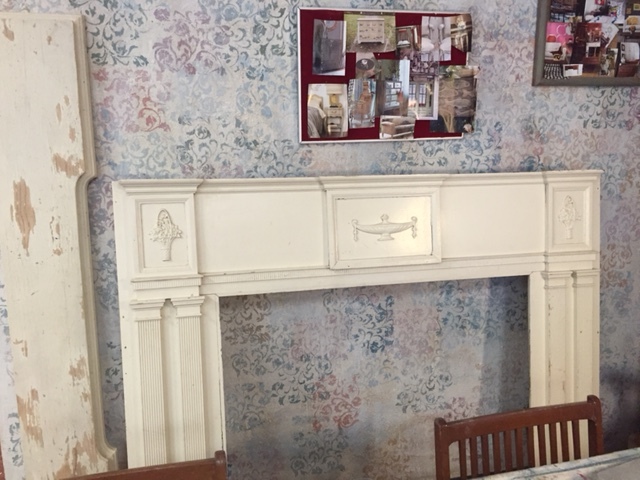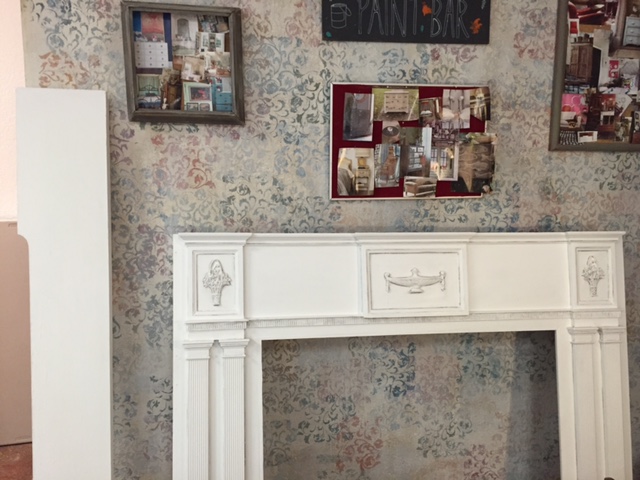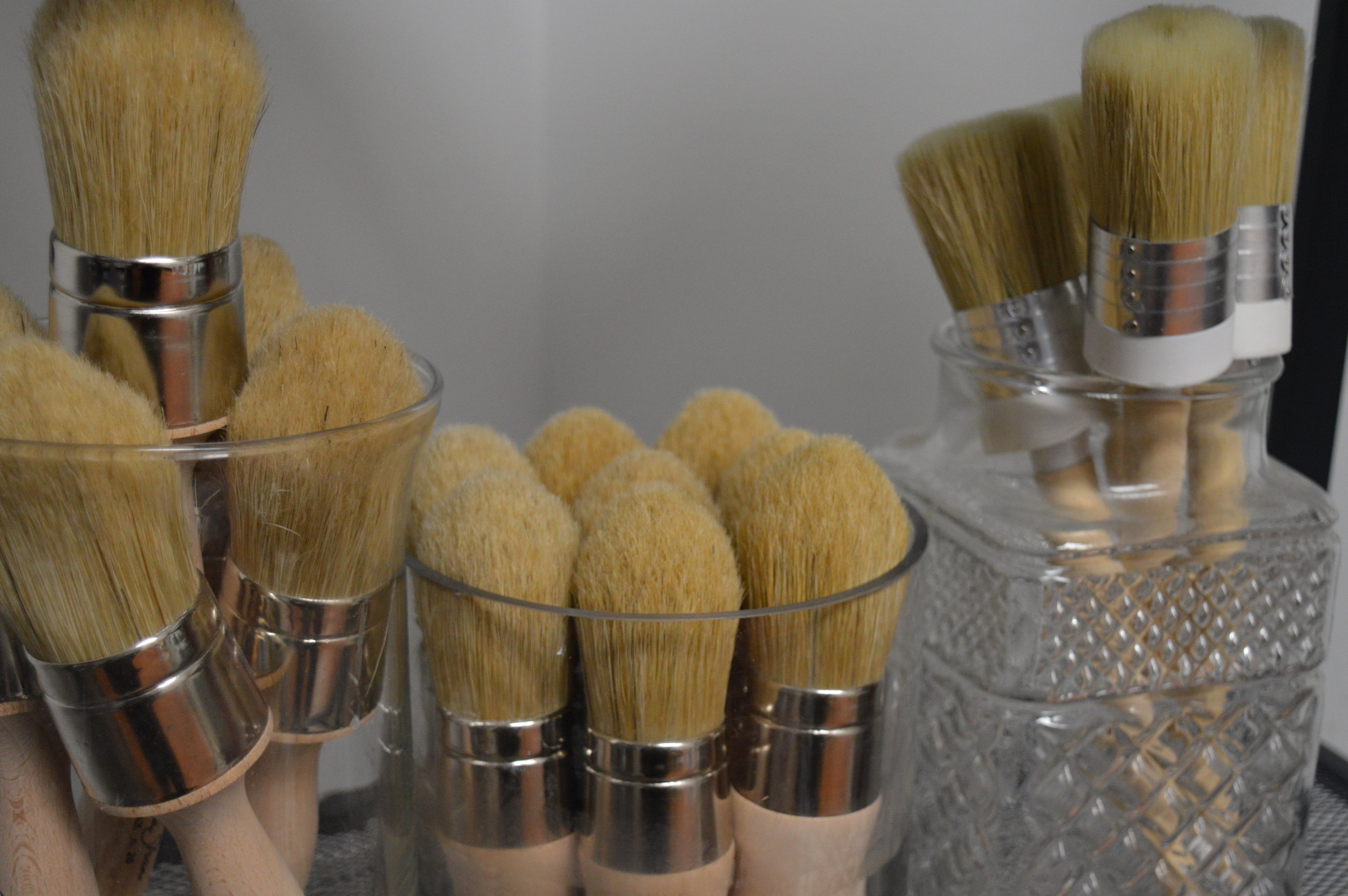
How to Open the New Chalk Paint® Litre Tin Lids
Have you bought an updated litre of Chalk Paint® but not been sure how to open the lid easily? Using these tips it should be a breeze for you.
Hello! Happy February. Our 2019 is in full swing, how about yours? Part of our new year has been an introductory to the updated packaging for the new Chalk Paint® litres. Have you tried the ‘global’ Annie Sloan paint yet? In case you’ve missed it, Chalk Paint® recently got a tiny update on the amount of clay in the formula, and therefore will be a little bit thicker in feeling going forward. We’ve been LOVING how creamy it is, and dare we say we didn’t know how it would ever possible for Chalk Paint® to get any better than what it’s been (since it’s so dreamy)… but it has. Our students and customers have been loving the update too.
The other part of that update is that the large tins will be transitioning over to litres from quarts, so you’ll be getting a tiny bit more bang for your buck as well. Opening the litre lids is a little bit of a learning curve, so we decided to highlight the best ways to open the lids without mangling them. All in all, they will be easier to press shut with just your hands going forward (instead of hammering them shut, eek).
Opening the tin
Ease the tin opener between the top of the lid and the edge of the tin.
Apply slight pressure and lift upwards.
Turn the tin a few degrees and repeat the motion. You will feel the air tight seal break and hear a “pop” noise.
Continue turning the tin until you have covered the whole circumference of the lid before attempting to pry the lid completely off.
Be as gentle and light handed as possible.
Following these steps will prevent the lid buckling or damaging the tin.
Closing the tin
To secure the lid after use, set in place on the top of the tin.
Place both palms on the lid and apply pressure down until you here a “pop”.
*The Wax, Lacquer, and Chalk Paint® tins are all the same, so you can use this method with every Annie Sloan tin. All metals are susceptible to some bending and denting if not handled gently.
If you haven’t made it to the ‘new’ formulated colors yet, visit us to get a quick painting demo to try it for yourself!
Happy Painting :)
What are Chalk Paint® Waxes and How to Apply Clear Wax
We want to teach you the quintessential waxing technique for Chalk Paint® Waxes- watch the demo videos with Clear Wax.
Have you worked with Chalk Paint® waxes? Waxing is a crucial step to finishing your work and creating a durable surface to seal the decorative paint. We're constantly perfecting our technique, and because we know there are many questions (as well as misconceptions) about it, we're off to task to share our tips with you! Feel free to also pop on over to our Chalk Paint® FAQs page.
The waxes come in four types: Clear, Dark (brown), White, and Black. They can be protective AND decorative at the same time. Waxes:
- are completely non-toxic when dried and cured, and even suited for 'child-safe' applications.
- should be at a slightly-melted crisco or butter-at-room-temp texture (sit in a sunny window or warm environment if they feel a bit firm to work with).
- fill the pores of a surface painted with Chalk Paint® decorative paint and cure to leave behind a hard surface that has bonded to the paint.
- in the case of Clear and White Waxes, are applied directly to the painted surface.
- in the case of the Dark and Black waxes, are applied over a wiped-back layer of Clear Wax (so you can control their depth)- the exception to the rule can be over Graphite since it's such a dark color to begin with.
- can be mixed together to create mid-tones like beige and grey.
- can be tinted with a drop of paint for an extra pop, if you need an exciting green or pink wax for example.
- can be layered up to 2-3 coats total for extra durability for heavy-traffic surfaces like cabinets and dining table tops (wiping back thoroughly and waiting 24-48 in between coats).
- dry within 24-48 hours for each coat, however need to be gently-used until they finish curing.
- cure and reach full hardness within a period of 2-4 weeks, depending on how many coats have been applied and humidity (again, gently use your surface depending on its usage- you can probably put your dishes back inside your cabinets, however that kitchen table will need to wait a bit longer to be ready for your dinner party!).
- are water-resistant.
- are interior-grade only.
- once fully dried and cured provide a brilliantly durable surface, which is easily maintained by wiping food spills, dirt, and dust away with a damp cloth or mild soap and water at most- we've also gotten crayon, marker, sharpie, highlighter, and other stubborn marks off by cleaning with more wax, which pulls it right up and out of the surface.
- are as durable as polycrylic-type topcoats when applied correctly and let to fully cure before heavy use.
- can be buffed to a soft satin sheen, or left relatively matte in finish.
Using wax brushes to apply all waxes ensures we don't apply too much or unevenly, and also prevents as much wasting of wax as possible. Here are some in-depth video demos of a preferred technique that works for most surfaces:
Part 1: Using Your Wax Brush to Apply Clear Wax
Part 2: Wiping Your Excess Wax Back, Finishing Up
And here's a concise recap of the waxing process to conclude:
Remember, patience is key when allowing topcoats to fully dry and cure during a DIY process. When you buy new furniture, topcoats have been allowed to fully cure before being put on a sales floor. We do have other topcoats with the same durability for different finish sheens (such as semigloss), for exterior projects, and others that might cure a tad bit sooner for heavy-traffic areas (ex; if you work with wax for your coffee table just keep in mind that you need time to let it cure). For all topcoats on tables we do recommend using placemats, coasters, etc. anyway to protect the finish as long as possible (nothing is completely iron-clad y'all). However we do say 'trust the wax!' because you can't beat it over hand-painted finishes, and can easily spot repair it if unexpected damages do occur.
Before & After: 'Persimmon' + Greek Blue Cabinet
A pop of color is just what this little cabinet needed...
For us furniture and interior painters, we know that projects often go in 'inspiration stages,' during which choosing the color can be the hardest part! We had a little boxy cabinet that was hanging around the studio just waiting to be painted, that we knew should have a pop of color and texture. We were a little stuck... until we remembered a piece that we had been previously been inspired by, by Leslie Stocker. Using Chalk Paint® decorative paint in Greek Blue, Barcelona Orange and Emperor's Silk blended together, and Old White accents, we created a finish that we absolutely LOVE! The idea was to combine opposite colors from the color wheel for a distinct look (such a great design technique for you to explore on future projects).
As usual, we cleaned the piece down first. Then we base-coated with Greek Blue, applying it thickly and essentially glopping it on for texture with our medium no. 12 Natural Round Brush. This brush helps create anything from barely-there texture to thick hills and valleys! We also waited for some paint to dry for 10-15 minutes and then brushed back and forth over it to pull up even more texture, and then let dry. We wanted the texture to hide some of the water damage to the varnish on the very top.
Barcelona Orange and Emperor's Silk were applied next simultaneously with two different brushes, blending together on the surface while wet. The more texture and visible layering, the better! We let some of the Greek Blue show through still in corners and strategic spots, and once the 'Persimmon' tone dried, some Old White was dry brushed over raised edges for accents. The goal was a look of an aged color patina. We even painted right over the hardware!
Then the distressing happened in a natural manner on edges and raised areas that might have aged with the piece if it was truly old (see our previous blog on tips for distressing). We went a bit heavier in areas right along the front and near the handle. Both 100-grit sandpaper and dampened edge of scrubbing sponge were used. And then we applied Chalk Paint® Clear Wax to finish.
We're delighted with the results and might replicate them in our own home! For now though this little piece packs a punch, and is at the shop waiting for its new home. Stop by to see it in person!
Before & After: Antique Mantle
We repainted and repaired an antique mantle, with Chalk Paint® Pure White plus waxes for a subtle yet fresh update!
When we were approached to rework this lovely antique mantle, we immediately said yes (for many reasons, mainly because we do this for a living duh!). This is something that we would only find in our vintage and antique-picking dreams we felt... and it needed some love and color updating for sure.
First we made sure to thoroughly clean it, plus sand and scrape away the peeling latex paint layers where applicable. Whenever working over a previously painted surface you must sand down chips and scrape away anything actively chipping, otherwise it can peel up your new paint layer. Next we assessed some cracking along seams of the 'shadow box' details:
This is not an uncommon encounter when working on old wooden pieces. Seams can split, and one common place to notice this is on everyday surfaces like doors, cabinetry, and window frames. We caulked these with 'painters caulk,' Big Stretch specifically. It's geared toward high flux of seams especially when painted over (make sure to check cure times and time between caulk and paint when using on your own). We trust this option too because once cured, Chalk Paint® decorative paint would adhere well.
Next we primed with our water-based, white-tinted Smart Prime because some old stains were evident to be popping through the Pure White. We think these may have been from old smoke that absorbed into the wood from long ago use. No matter how much you clean, sometimes a chemical or other substance might just need to be covered up durably! We learn to be flexible with these things...
And then two coats Pure White Chalk Paint® decorative paint, plus clear wax all over, and black wax in the details with a light hand. Voila! It's not a super drastic change, however it breathed new life into this piece by freshening it up and helped the uniquely carved details stand out better. Have you painted a mantle before? How did it turn out? Feel free to share! Happy Painting xoxo
Inside the Toolbox: Using Annie Sloan's Flat Brushes for Smooth Finishes
Why we love using Annie Sloan's Flat Brushes for smooth painted finishes.
Hello in the new year! For our first blog post of 2017, we wanted to jump right in and talk about smooth, sleek painted finishes. These are the quintessential contemporary, modern, and even Mid-century Modern finishes that are not only popular at the moment but timeless. As you know, Chalk Paint® by Annie Sloan is versatile for both smooth and rustic techniques. How do we achieve such looks though?
Since Chalk Paint® decorative paint is a bit thicker than other types of paint, achieving specific finishes can come down to the type of brush. Chalk Paint® is already relatively self-leveling (especially once a layer of Soft Wax is applied), so it's not difficult to use your brush for smooth finishes. To minimize the look of brush strokes, use Annie Sloan's Flat Brushes. As high-quality synthetic brushes, they've been made to specifically work well with her paint line. When painting, work the brush from one side to the next of each section of your piece, working 'with the grain.' Each layer of paint should be thin and allowed to dry thoroughly before the next. Adding a tiny bit of water in with your paint can also help spread each stroke nicely, with minimized appearance. Anytime you feel the need to slightly sand, don't hesitate! See our video below:
The Flat brushes come in two sizes, giving greater accessibility for different sized surfaces. The small size is thin and narrow, and perfect for trim and other small spaces. They're easy to clean with soap and water. We always stock both sizes in our brick & mortar shop and online.
*You may have also seen painting techniques where brushstrokes are painted haphazardly, in an almost cross-hatched effect. This is a technique that Annie Sloan displays well, which fools the eye into thinking the surface looks flat and even due to optical confusion. Try your hand with that using the Flat Brushes if you'd like as well!
Happy Painting xo.



